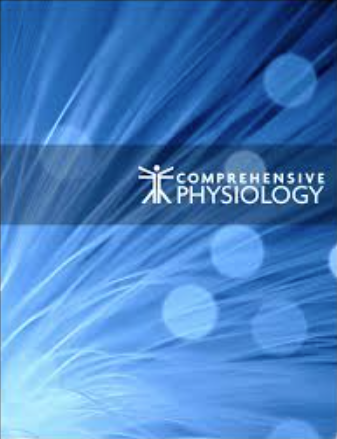求助PDF
{"title":"Pathophysiology of Red Blood Cell Trapping in Ischemic Acute Kidney Injury.","authors":"Sarah R McLarnon","doi":"10.1002/cphy.c230010","DOIUrl":null,"url":null,"abstract":"<p><p>Red blood cell (RBC) trapping describes the accumulation of RBCs in the microvasculature of the kidney outer medulla that occurs following ischemic acute kidney injury (AKI). Despite its prominence in human kidneys following AKI, as well as evidence from experimental models demonstrating that the severity of RBC trapping is directly correlated with renal recovery, to date, RBC trapping has not been a primary focus in understanding the pathogenesis of ischemic kidney injury. New evidence from rodent models suggests that RBC trapping is responsible for much of the tubular injury occurring in the initial hours after kidney reperfusion from ischemia. This early injury appears to result from RBC cytotoxicity and closely reflects the injury profile observed in human kidneys, including sloughing of the medullary tubules and the formation of heme casts in the distal tubules. In this review, we discuss what is currently known about RBC trapping. We conclude that RBC trapping is likely avoidable. The primary causes of RBC trapping are thought to include rheologic alterations, blood coagulation, tubular cell swelling, and increased vascular permeability; however, new data indicate that a mismatch in blood flow between the cortex and medulla where medullary perfusion is maintained during cortical ischemia is also likely critical. The mechanism(s) by which RBC trapping contributes to renal functional decline require more investigation. We propose a renewed focus on the mechanisms mediating RBC trapping, and RBC trapping-associated injury is likely to provide important knowledge for improving AKI outcomes. © 2024 American Physiological Society. Compr Physiol 14:5325-5343, 2024.</p>","PeriodicalId":10573,"journal":{"name":"Comprehensive Physiology","volume":"14 1","pages":"5325-5343"},"PeriodicalIF":5.2000,"publicationDate":"2023-12-29","publicationTypes":"Journal Article","fieldsOfStudy":null,"isOpenAccess":false,"openAccessPdf":"","citationCount":"0","resultStr":null,"platform":"Semanticscholar","paperid":null,"PeriodicalName":"Comprehensive Physiology","FirstCategoryId":"3","ListUrlMain":"https://doi.org/10.1002/cphy.c230010","RegionNum":2,"RegionCategory":"医学","ArticlePicture":[],"TitleCN":null,"AbstractTextCN":null,"PMCID":null,"EPubDate":"","PubModel":"","JCR":"Q1","JCRName":"PHYSIOLOGY","Score":null,"Total":0}
引用次数: 0
引用
批量引用
Abstract
Red blood cell (RBC) trapping describes the accumulation of RBCs in the microvasculature of the kidney outer medulla that occurs following ischemic acute kidney injury (AKI). Despite its prominence in human kidneys following AKI, as well as evidence from experimental models demonstrating that the severity of RBC trapping is directly correlated with renal recovery, to date, RBC trapping has not been a primary focus in understanding the pathogenesis of ischemic kidney injury. New evidence from rodent models suggests that RBC trapping is responsible for much of the tubular injury occurring in the initial hours after kidney reperfusion from ischemia. This early injury appears to result from RBC cytotoxicity and closely reflects the injury profile observed in human kidneys, including sloughing of the medullary tubules and the formation of heme casts in the distal tubules. In this review, we discuss what is currently known about RBC trapping. We conclude that RBC trapping is likely avoidable. The primary causes of RBC trapping are thought to include rheologic alterations, blood coagulation, tubular cell swelling, and increased vascular permeability; however, new data indicate that a mismatch in blood flow between the cortex and medulla where medullary perfusion is maintained during cortical ischemia is also likely critical. The mechanism(s) by which RBC trapping contributes to renal functional decline require more investigation. We propose a renewed focus on the mechanisms mediating RBC trapping, and RBC trapping-associated injury is likely to provide important knowledge for improving AKI outcomes. © 2024 American Physiological Society. Compr Physiol 14:5325-5343, 2024.
缺血性急性肾损伤中红细胞潴留的病理生理学。
红细胞(RBC)滞留是指缺血性急性肾损伤(AKI)后,RBC 在肾脏外髓质微血管中的积聚。尽管这种现象在缺血性急性肾损伤后的人类肾脏中非常突出,而且实验模型的证据也表明红细胞滞留的严重程度与肾脏恢复直接相关,但迄今为止,红细胞滞留还不是了解缺血性肾损伤发病机制的主要焦点。来自啮齿类动物模型的新证据表明,在肾脏缺血再灌注后的最初几个小时内发生的肾小管损伤大部分是由红细胞滞留造成的。这种早期损伤似乎是由 RBC 细胞毒性引起的,并密切反映了在人类肾脏中观察到的损伤特征,包括髓质小管的脱落和远端小管中血红素铸型的形成。在这篇综述中,我们讨论了目前对 RBC 陷落的了解。我们的结论是,红细胞滞留是可以避免的。RBC滞留的主要原因被认为包括流变学改变、血液凝固、肾小管细胞肿胀和血管通透性增加;然而,新的数据表明,皮质缺血时髓质灌注维持的皮质和髓质之间的血流不匹配也可能至关重要。红细胞滞留导致肾功能衰退的机制需要更多的研究。我们建议重新关注介导 RBC 陷落的机制,RBC 陷落相关损伤可能为改善 AKI 预后提供重要知识。© 2024 美国生理学会。Compr Physiol 14:5325-5343, 2024.
本文章由计算机程序翻译,如有差异,请以英文原文为准。


